This gorgeous pear pie is made with poached pears to make the best pear pie with a flavourful filling because the pears are poached in wine first.
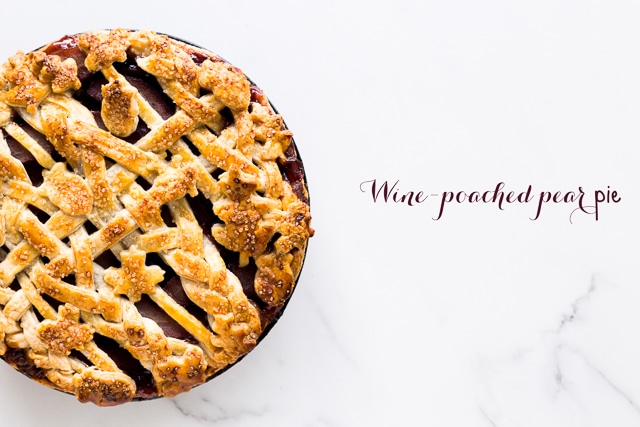
I love poached pears. They make an exciting addition to a big lunch salad with blue cheese and toasted nuts, if you ask me. Poached in wine, poached pears are downright fancy. And they are the inspiration for this pear pie.
If making pie crust from scratch scares you, be sure to check out my pie crust masterclass, which includes video tutorials for making pie crust in the stand mixer, food processor, and by hand!
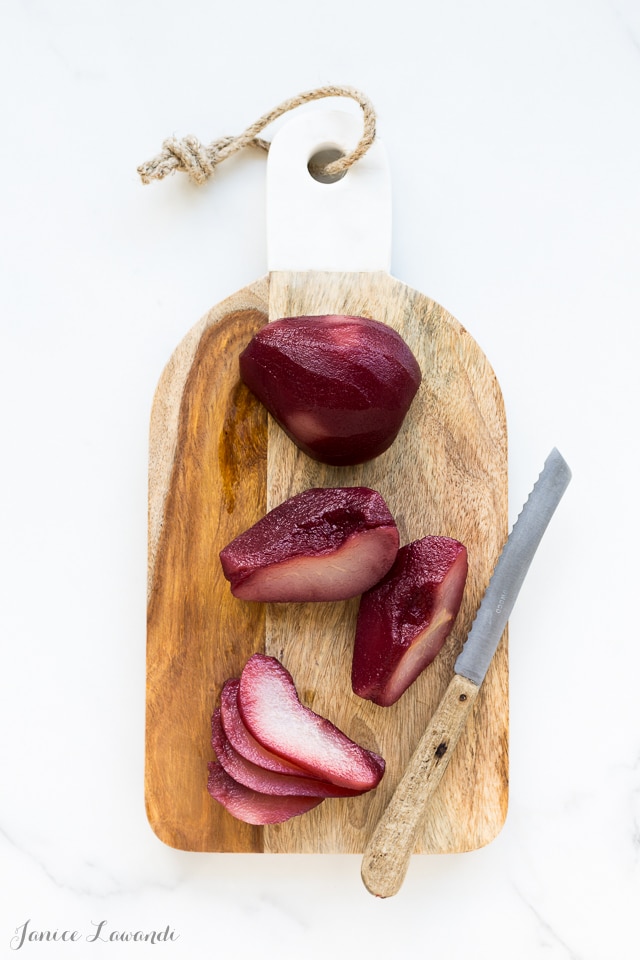
Which pears are best for poaching?
For poaching, you want to choose a firm pear of a variety that holds its shape well during cooking and baking. You can use Bosc pears or Bartlett for poaching. Flemish Beauty pears are also great for poaching. These pears keep their shape when heated, which makes them perfect for poaching in light syrup or wine syrup.
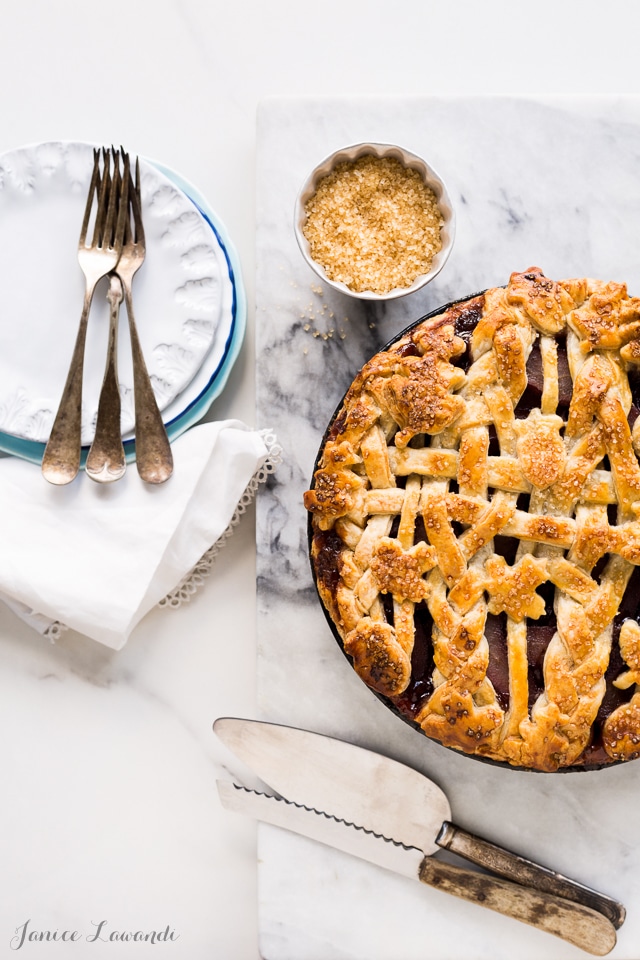
How do you make poached pears?
To make poached pears, you first prepare a thin syrup of sugar and water. You can add wine and spices to make the poaching liquid more flavourful. Vanilla bean is also nice for this type of recipe. Then all you have to do is peel and core a few pears, immerse them in the poaching syrup, and let them simmer for about 20 minutes or until they are fork tender, but not falling apart. You can strain the pears when they are cooked through and then boil down the poaching liquid to make a syrup to serve with the poached pears. It's the same principle for poached quince, but quince fruit take longer to cook through.
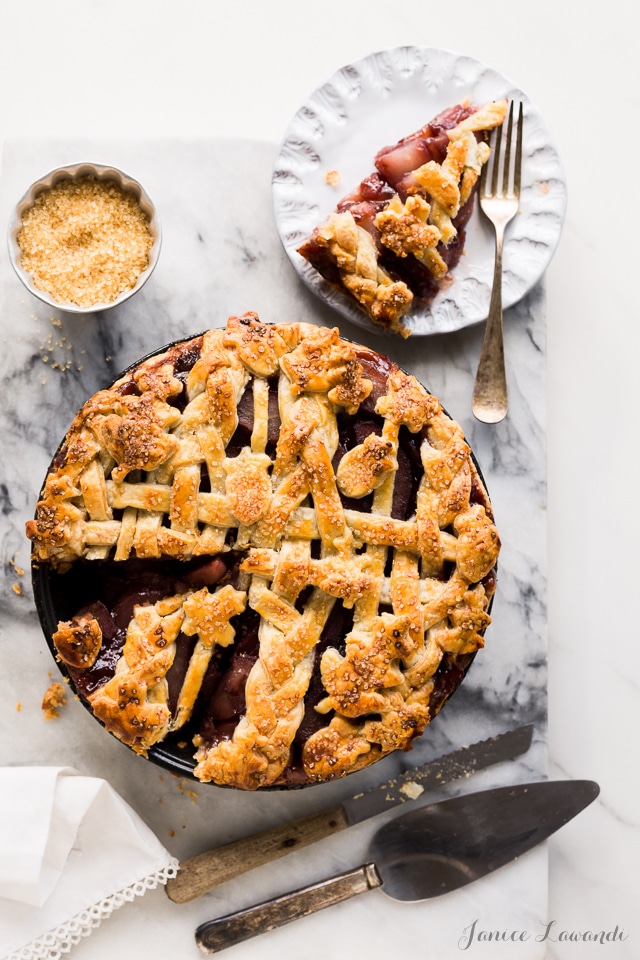
How to get the pear filling to set right
When testing this recipe, I used too much tapioca starch in the first version of this wine-poached pear pie: half a cup to be exact. The filling turned into a gelatinized disappointment as it cooled, although it tasted amazing. There was way too much tapioca starch for the weight of pears. I did more tests.
Taking a step back from the recipe, I realized that I had to make this pie with one tablespoon of tapioca starch to thicken the pie juices and not the half cup my insomnia brain initially thought was necessary. Half a cup of tapioca starch is wrong for a pear pie and is what you would need to thicken 2 pounds of rhubarb, like for this rhubarb lattice pie!
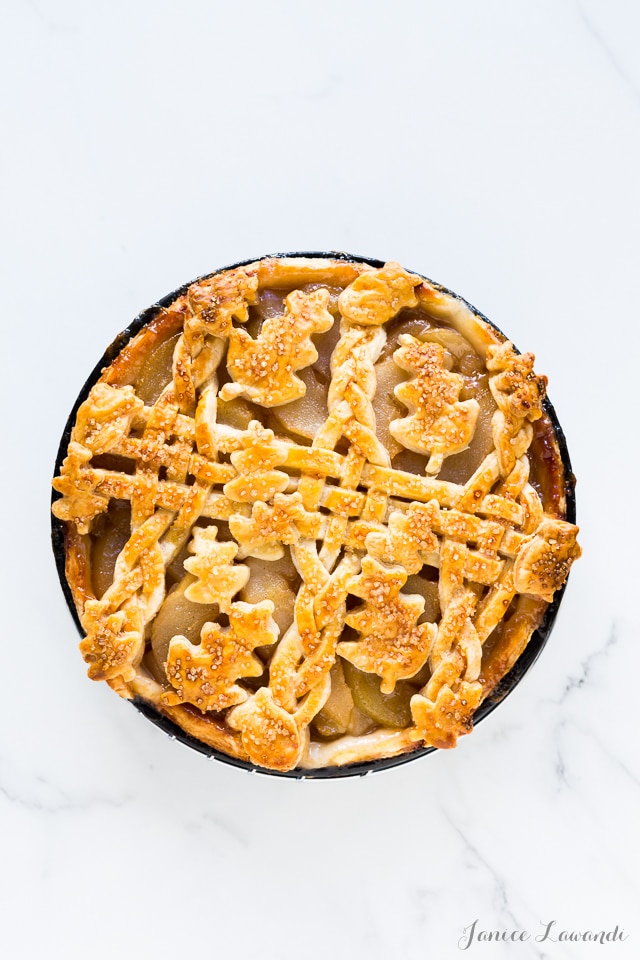
This pie crust recipe is adapted from the flaky pie crust on Serious Eats. It's got a lot of butter and a fair bit of water. The water works with the flour to give the pie dough some strength. It rolls out really nicely and as Stella Parks mentions, it doesn't crack when you roll it.
If your favourite pie crust is giving you trouble, next time, add more water when you make it! And make sure to invest in a few tools for pie-making:
- Pie plates: I like to use dark metal pie plates because metal is better at conducting heat to the pie dough and the darker finish will absorb more heat, similar to this one found on Amazon
- Rolling pin: I prefer the French-style rolling pin with tapered edges, like this one on Amazon
For this pear pie, I made a braided lattice. For a simpler look, you can read about how to make a lattice pie crust with 7 or 12 strips of pie dough.
What to do with pie dough scraps
Inevitably, when you make a pie, you will be left with a pile of pie dough scraps. Gather them up and press them together to shape them into a disk and use them to make pie crust cookies!
📖 Recipe
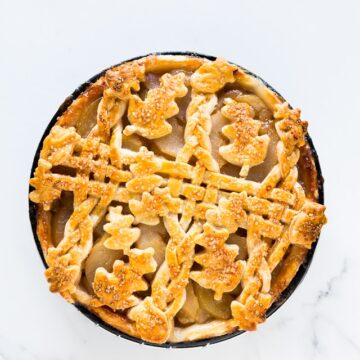
Wine-poached Pear Pie
Equipment
Ingredients
Wine-poached pears
- 750 mL wine red for a more robust wine flavour, a light rosé or white for a milder taste
- 250 mL water
- 200 grams granulated sugar
- 1 cinnamon stick
- 1 vanilla bean split
- 1 slice lemon peel no pith
- 1.8 kg pears peeled, cored and cut in half—I recommend Flemish Beauty or firm Bosc/Bartlett pears
For the all-butter crust
- 250 grams bleached all-purpose flour
- 5 mL Diamond Crystal fine kosher salt
- 15 mL granulated sugar
- 230 grams unsalted butter cut into cubes, cold
- 125 mL cold water
For the pear filling
- 1 batch wine-poached pears
- 50 grams granulated sugar
- 15 mL tapioca starch
- 1.25 mL ground cinnamon
- 1 large egg(s) beaten
- Turbinado sugar
Instructions
Wine-poached pears
- Heat the liquids with everything but the pears. Bring the mixture to a boil.
- Add the pear halves and bring to a boil again. Cover with a round of parchment and weigh everything down with a lid or a plate so that the pears are immersed. Reduce the heat so that the poaching liquid is just simmering. Poach the pears for 10 to 15 minutes. The pears should be fork-tender when they are done, but not to the point of breaking down or falling apart.
- Strain the pears into a large container, then let the poaching liquid cool completely. Transfer the liquid to the container with the pears, cover, and let the pears soak for a couple days in the fridge before making the pie. You can make the pie the next day even, but the wine flavour might not be as pronounced.
To make the pie dough
- In a large bowl, combine the flour, granulated sugar and salt. Drop in the cubed butter and press it and work it into the flour with your finger tips. Smoosh all the cubes of butter to flatten them out in the flour. Pour the cold water over top and then mix it with a fork. Finish with your hand, patting the dough into a disk.
- Wrap the dough and chill for 20 minutes.
- Roll the dough to a large rectangle (10x15-inch), then fold the top and bottom quarters over towards the centre, then fold it over again to make one 10-inch long rectangle. Press it gently together. Fold the dough in half to make a compact rectangle. Divide the dough in half, lengthwise, to form two blocks of dough. Tuck the corners of each block under to make a disk-like block, wrap each block and chill another 20 minutes.
- Take one half of the dough out of the fridge, then roll it out into a big disk (about 11–12 inch diameter). Transfer the dough to a metal pie plate, working it down into the bottom edge and grooves. Trim the crust.
- Refrigerate the bottom crust for 2 hours. Then proceed with the rest of the recipe
To make the pie
- Preheat the oven to 400 °F (200 °C). Line a baking sheet with parchment. Drain the poached pears really well, then slice each half into 6 pieces.
- In a large bowl, toss the pear slices gently with the sugar, tapioca starch, and cinnamon.
- Transfer the filling to the chilled crust.
- Roll out the second disk of dough to a large circle, at least 12 inch diameter. Cut out shapes or strips to make a lattice. Arrange the top dough (or strips) on top of the filled pie, trim and tuck under the ends, and crimp or press the edges together. Brush the top crust with the beaten egg and sprinkle with turbinado. Place the unbaked pie in the freezer for 30 to 45 minutes (or even overnight).
- Place the pie on the parchment-lined baking sheet and bake the pie on the bottom rack for 30 minutes. Turn down the oven to 350 °F (175 °C) and continue baking for another 50–60 minutes until the filling is bubbling and the crust is golden brown.
- Let cool at least 1 hour before serving (preferably longer)

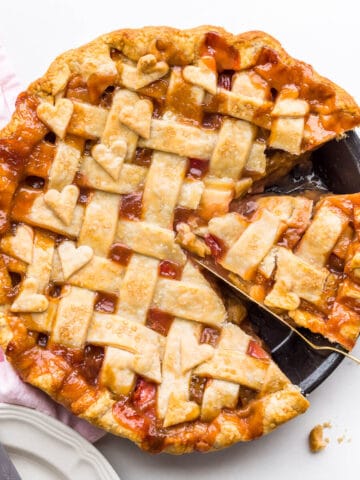
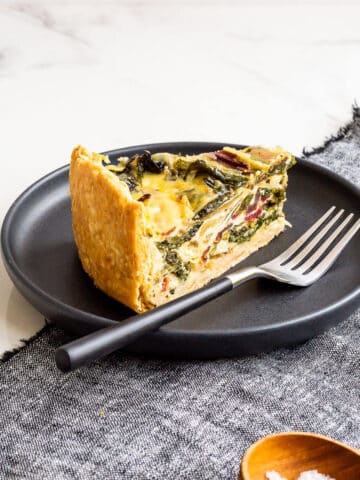
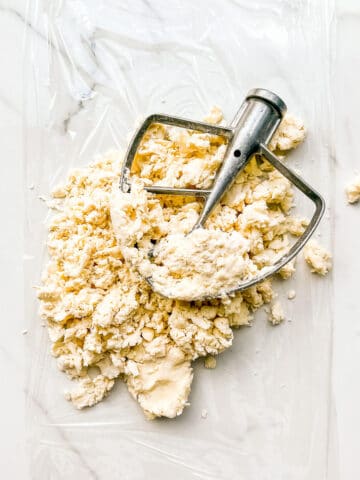
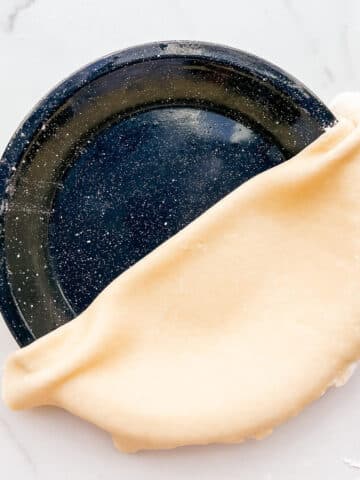
Winnie says
So unique!! Soaking the pears is wine must have added a nice flavor!! Love this!
Julia (@imagelicious) says
Oh, wow! I'm so sorry about your insomnia. It sounds da absolutely terrible! I'm glad you are getting better now. The pie looks spectacular!
Janice says
Thanks, Julia! It was pretty terrible, but I'm doing so much better now! I'm really glad I found help!